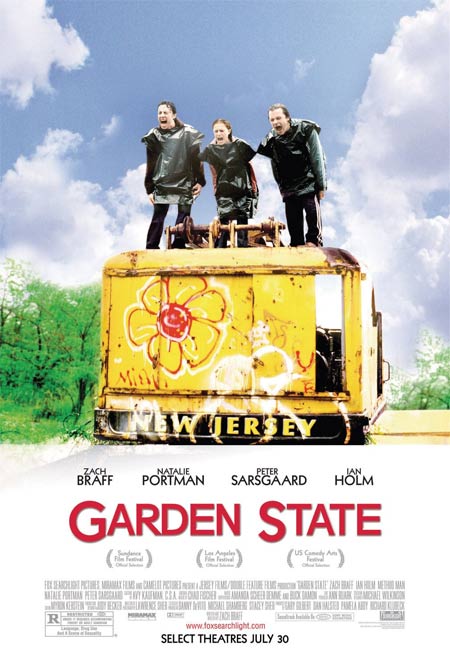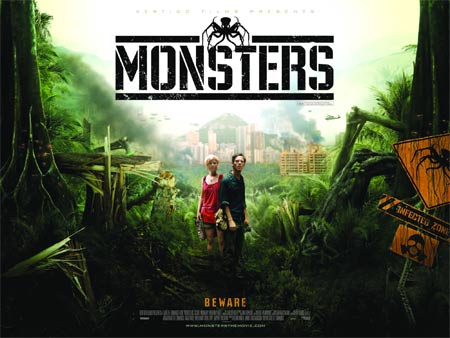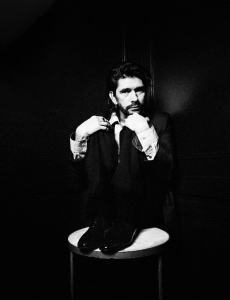- These days, making a film doesn’t come cheap – some budgets can exceed the GDP of some developing countries. But does blowing up buildings, totalling cars and paying for stars always make them better? Michel Faber thinks not, as Monsters proves…
I fell out of love with movies in 2004. Like most relationship break-ups, it happened suddenly but had been threatened for a long time. It wasn’t triggered by one of those aggressively crass blockbusters that dominate the multiplexes. I’ve always been the sort of person who only goes to art-house cinemas. Every intelligent person knows Hollywood is rotten, but there’s more to film than Hollywood, right?
So, one evening in 2004, I settled down in Edinburgh’s Cameo to watch Garden State, an impeccably independent production written, directed, financed and acted in by Zach Braff. It was the sort of project where the guy probably remortgaged his house to raise capital the makers of The Dark Knight Rises would regard as pocket change. Garden State started off strong but once it settled into gear, I realised that the movie and I were not getting along. I was irritated by its adolescent angst, its self-conscious kookiness, its slick professionalism, its relentlessly on-message philosophising and by Natalie Portman’s character, who I was supposed to find cute but wanted to strangle. The most depressing thing was that there was nothing in particular about Garden State that disqualified it from being made by a Hollywood studio. It was heartfelt, yet came across as glib. Or maybe that was just me, falling out of love.
In the same week, I saw Northfork, another valiantly independent film, produced, written and directed by the brothers Michael and Mark Polish, with their dad helping to build some of the sets. In the story, the titular Montana town has to be evacuated because of impending floods. Nick Nolte, playing a stoical priest who stays behind to care for a dying orphan, does his utmost to radiate tragic nobility. A dolly crane slowly transports us into an open grave as the orphan is lit for maximum pathos. Right there in the cinema, I thought: “Fuck it. I’m not going to put up with this anymore.” I walked out.


- Since then, it’s been almost impossible to get me into a cinema. I could write 10 pages about all the reasons, some of which are linked to other crises of faith that have rocked my life as I enter my fifties. But one of the main factors is that movies – almost all movies – cost so damn much. Even the cheap ones. Garden State cost $2.5 million and Northfor was made on an even thinner shoestring budget of $1.9 million. Compared to the hundreds of millions that are spent on bloated superhero franchises, this is modest indeed. But hang on just a minute and do a reality check: two million dollars? How much could you achieve in your own life with that much money? What could you do for your kids? How much medical care would it fund for loved ones who’ve fallen ill? What about those gas and electricity bills you’re having trouble paying? Are you really convinced that a sum greater than your entire lifetime’s wages is worth spending on 97 minutes of glossy panning shots of actors pretending to get miffed?
Yeah, yeah, I know: Citizen Kane, The Man Who Fell to Earth, The Princess Bride, Apocalypse Now, etc, etc. But I hope you can see where I’m coming from. I’m getting old, I’m earning less each year, there’s illness afflicting my family and the world’s economy is circling the drain. Not only do I begrudge the 200 million dollars that’s pumped into the latest James Bond or X-Men extravaganza, but I’m uneasy about the millions that are poured into the indies too. Does that mean there’s no hope for me and the medium?
Actually, there’s a glimmer. A couple of years ago, my wife dragged me to the flicks and I saw a sci-fi thriller called Monsters, conceived and directed by Gareth Edwards.

Conceptually, it was neat: the USA’s strained relationship with illegal immigrants metaphorically embodied in a vision of alien invasion. Mexico is infested with extraterrestrials, which have been there so many years that the USA’s attitude has evolved from alarm to apathy: as long as the borders are kept secure, who cares what horrors lie beyond? Don’t get me wrong: Monsters is not a deeply profound film; the political subtext is less important than the popcorn thrills. In fact, it’s not hugely artier than the Arnold Schwarzenegger vehicle Predator, just better acted and directed. Oh, and yes, there is one other, crucial difference. It was made for less than $500,000.

- When that budget was first disclosed, many pundits refused to believe it. After all, this is not a picture where two people sit in a room talking. There are exotic crowd scenes, spectacular voyages upriver, vistas of urban devastation, jungle treks, giant alien octopus thingies. How was it possible? Through two main strategies – one of which has been available to indie filmmakers since the dawn of cinema, the other of which is revolutionary.
The time-honoured strategy is a knack for improvisation. You travel through Mexico, Guatemala and Belize in an old van crammed with seven co-workers who are very smart and adaptable. Instead of having a camera dolly, you prop your camera on a blanket in the window of the van. You involve the local people as extras and allow the action to be largely ad-libbed from whatever opportunities you find.

- Traditionally, the big drawback of this sort of approach is that the real world will not provide all the visuals you need. You want a Mexican town that has the charred remains of ruined buildings and a large billboard that says INFECTION ZONE, whereas the Mexican town you’re filming in is undamaged and has a large billboard advertising Pepsi. And as soon as you try to fix this by constructing an artificial set of charred buildings, or even by getting permission to erect an unsanctioned billboard, your costs skyrocket. Stopping traffic for an hour to eliminate unwanted commuters from your precious mise-en-scène will set you back a fortune.
Here’s where the new technology comes in. Edwards and his team shot the best footage they could get – hundreds of hours of it, stored on memory sticks. Then they spent months revising it on their laptops. Pixel by pixel, they added the charred buildings, the aliens, the writing on the walls, and they subtracted the elements that didn’t fit the picture.
“Are you really convinced that a sum greater than your entire lifetime’s wages is worth spending on 97 minutes of glossy panning shots of actors pretending to get miffed?”
Yet Monsters still feels compellingly real because, unlike expensive CGI-based crap such as Fantastic Four, the essential aspects of the footage – the aspects that engross us, like atmosphere, the way the light falls, the way people move and inhabit space – are real, not confected by boffins.
I’d hoped that this way of filmmaking would catch on. In times of recession, it certainly should. But so far, it hasn’t. A studio is reported to be making a sequel to Monsters, directed and filmed by a different team but exploiting the same plot set-up. Budget? 5 million.
A big-budget movie version of Michel’s novel Under the Skin, starring Scarlett Johansson, is out this week… Read more on the film here
Subscribe to Port Magazine annually and receive each issue to your door.
Get PORT in print



